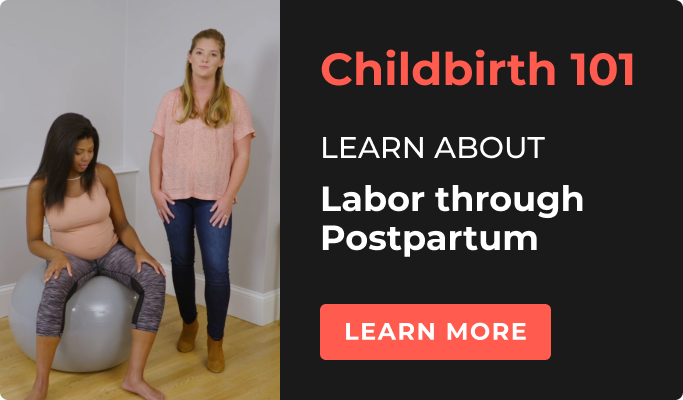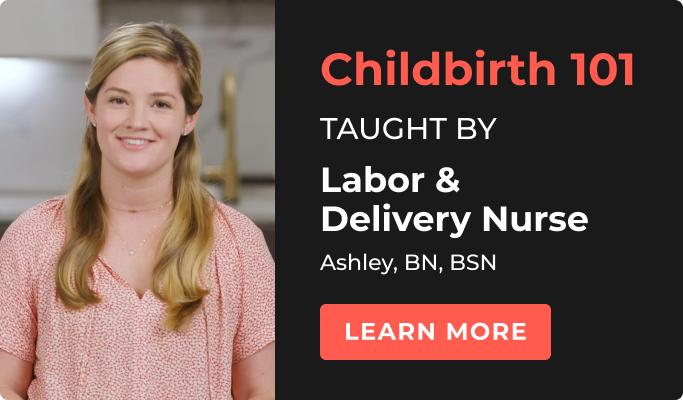If someone told you to close your eyes and imagine a childbirth class, you’d likely picture couples sitting in a circle, one supporting the pregnant person from behind, while being guided in breathing exercises to relieve pain and push through contractions. This is likely because it’s what's more widely shown in movies— and also likely because for a long time it was the most common type of childbirth method: Lamaze.

Many expecting parents have heard of Lamaze classes, but might not necessarily know what they are or what the method is all about. Here, we’ll go through what Lamaze is, who it’s beneficial for, and alternatives for expecting parents.
What is Lamaze?
This childbirth method became popular in the 1950s as an alternative technique to medical intervention during childbirth. The goal is to build a mother’s confidence in her ability to give birth and cope with pain naturally through various breathing, positioning and massage techniques. Now, the foundation of Lamaze is based on what they call their “6 Healthy Birth Practices,” which are designed to simplify the birth process, alleviate fears and manage pain, according to Lamaze International. The birth practices are:
1: Let labor begin on its own.
2: Walk, move around and change positions throughout labor.
3: Bring a loved one, friend or doula for continuous support.
4: Avoid interventions that are not medically necessary.
5: Avoid giving birth on your back and follow your body's urges to push.
6: Keep mother and baby together
What to expect during a Lamaze course:
A Lamaze class can be taken in person or online and usually consists of about 12 hours of class time that walk you through:
- The 6 healthy birth practices
- Focused breathing techniques for labor
- Normal labor and birth
- Support person tips
- Complications that could arise and what might be medically necessary
- Pain Management techniques
- Early interaction with your baby
What are the alternatives?
There are many options when it comes to childbirth classes, hospital classes, in-person classes, and online classes. Many focus on various labor and pain management techniques both with and without medical intervention.
How our Childbirth 101 online class compares:
Our comprehensive online class, Childbirth 101: From Labor through Postpartum, will walk you through everything from what to expect from your pregnant body, to labor and delivery, how to effectively manage pain, tips for your support team, prenatal and perinatal mood and anxiety disorders, and more.
Our course covers all the ways labor could go— the expected and the unexpected. We also give you unbiased pain management tips from our expert (an experienced labor and delivery nurse!), plus questions to ask your provider, a guide to choosing your birth preferences, packing your hospital bag, what to expect before labor and postpartum, as well as prepare you for those first few days with the baby.
How do I know what’s right for me?
Knowing the best option for you takes some research and consideration. If the techniques outlined in Lamaze, which are guided to expecting parents who know they do not want any medication and want to focus only on breathing and movement techniques to relieve pain, are appealing to you, that’s great! If you don’t know what you’re looking for, or want a more comprehensive childbirth education class, check out our online course, Childbirth 101: From Labor through Postpartum.



